
Leaning In While Anchored in Richardson Bay
Over the years, we’ve written a lot about the Sausalito waterfront and Richardson Bay. It’s generally protected, scenic, and a beautiful piece of San Francisco’s mostly navigable waterways. But you can forget how shallow it is right outside the channel. With all those boats anchored to the east of the channel, it can be tempting to set a course from the tip of Belvedere to the north of the first channel marker if you’re heading up to KKMI or the fuel dock at Clipper Yacht Harbor.
We were out sailing with Randy Gridley aboard his Sabre 38 Agea and heading back to Clipper Yacht Harbor during Saturday afternoon’s low tide and were reminded that it’s wise to stay in the channel. Agea draws 6′ 6″ so Randy is dedicated to mid-channel, even on high-tide days. Here are a few photos to remind you to do the same.
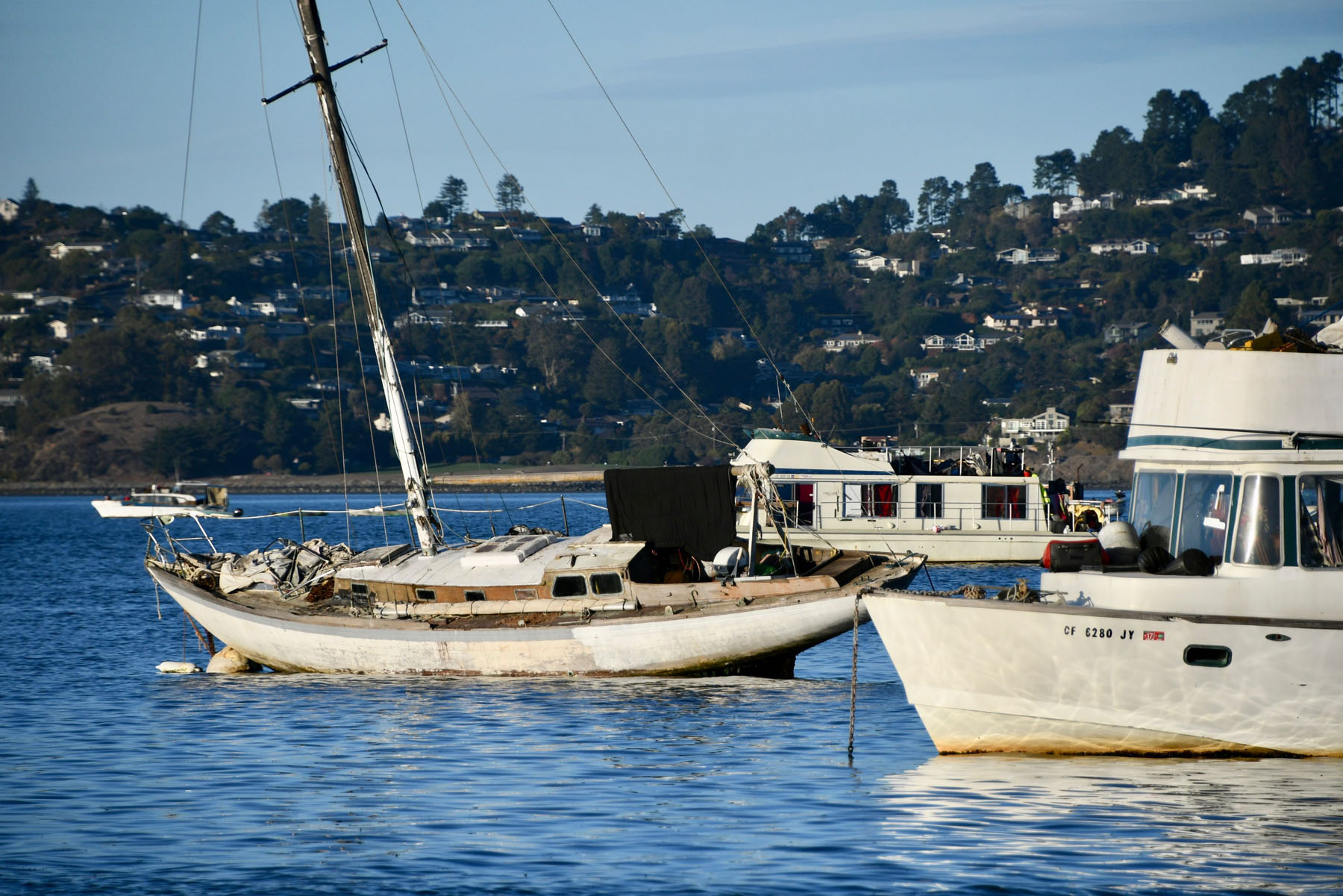
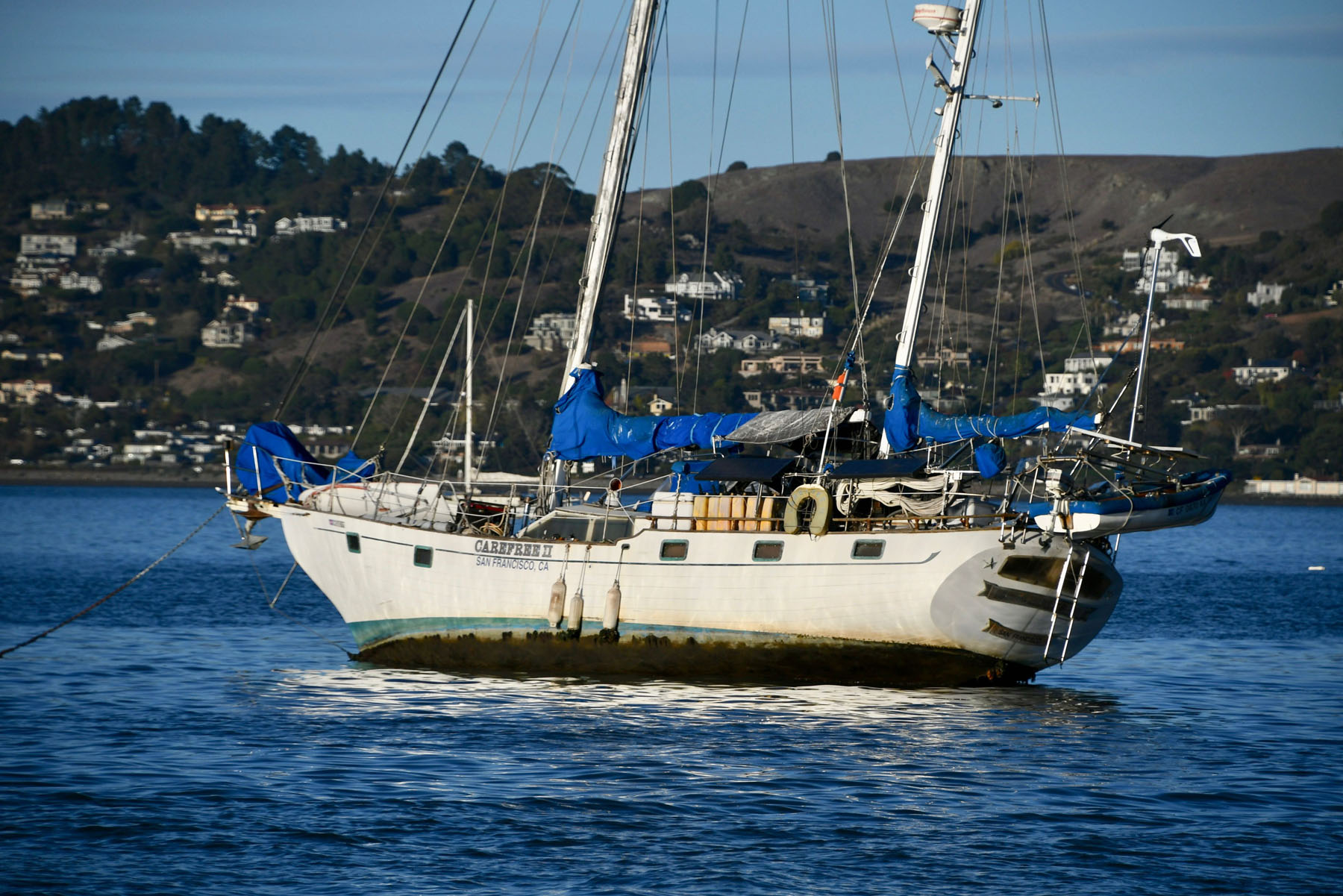
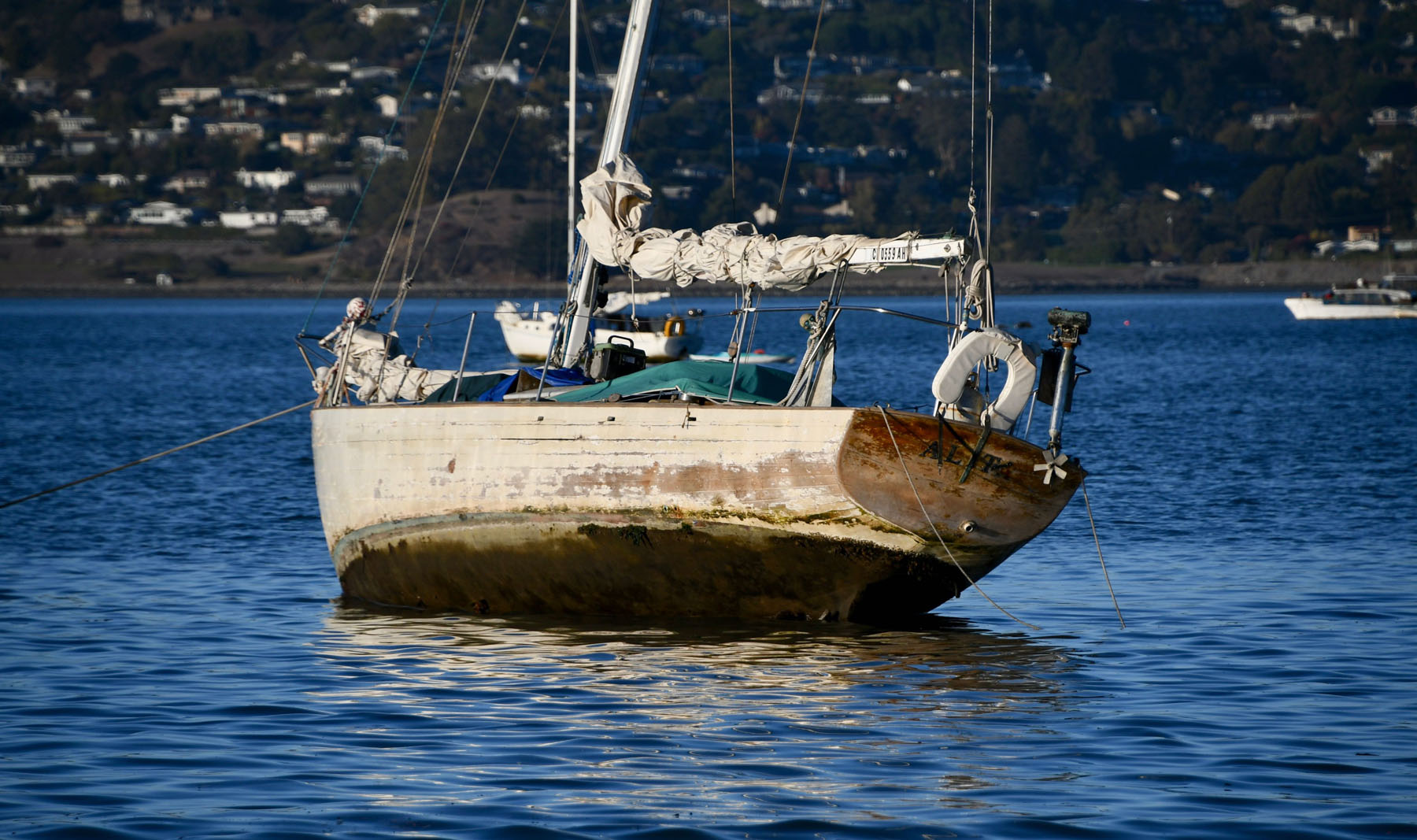
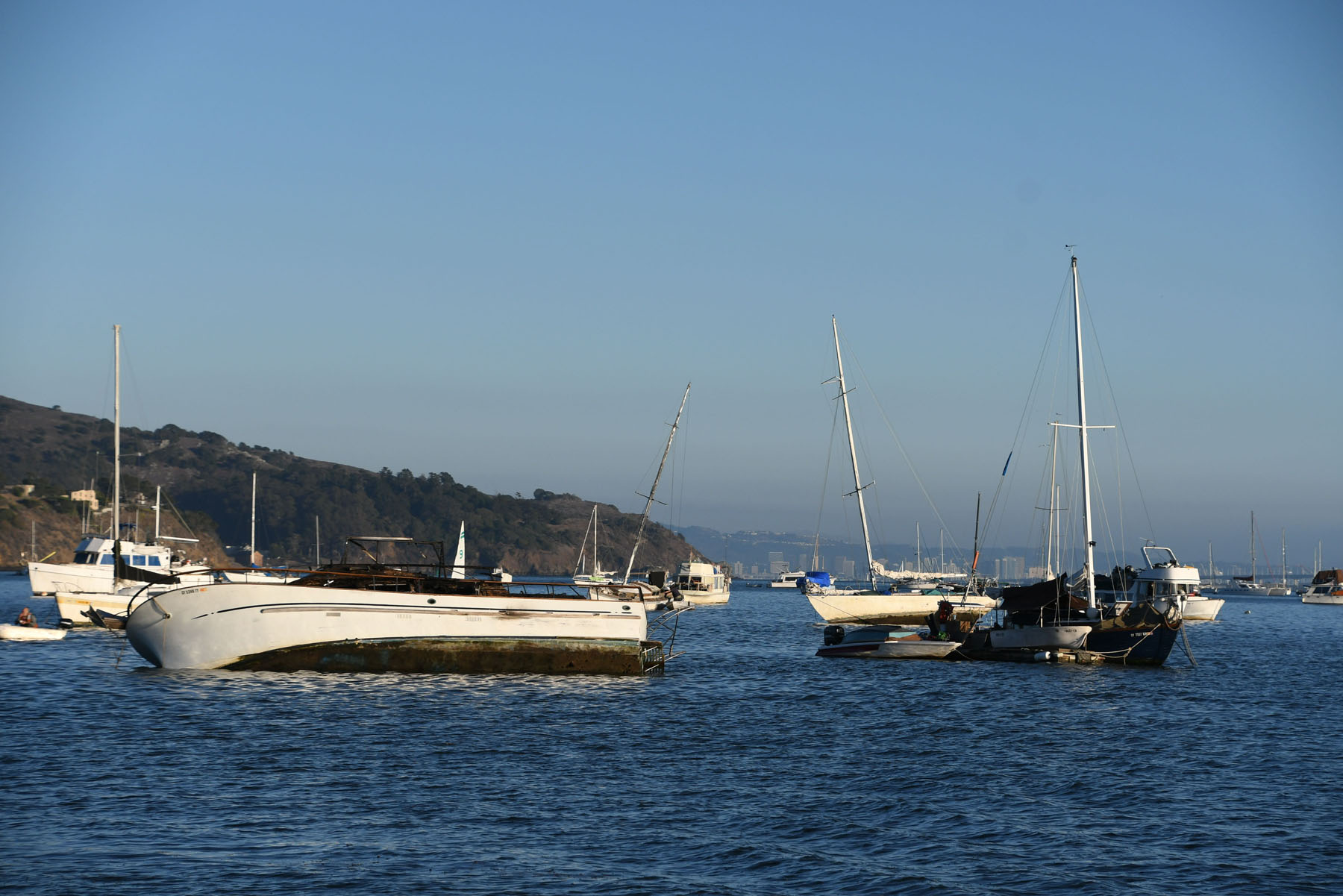
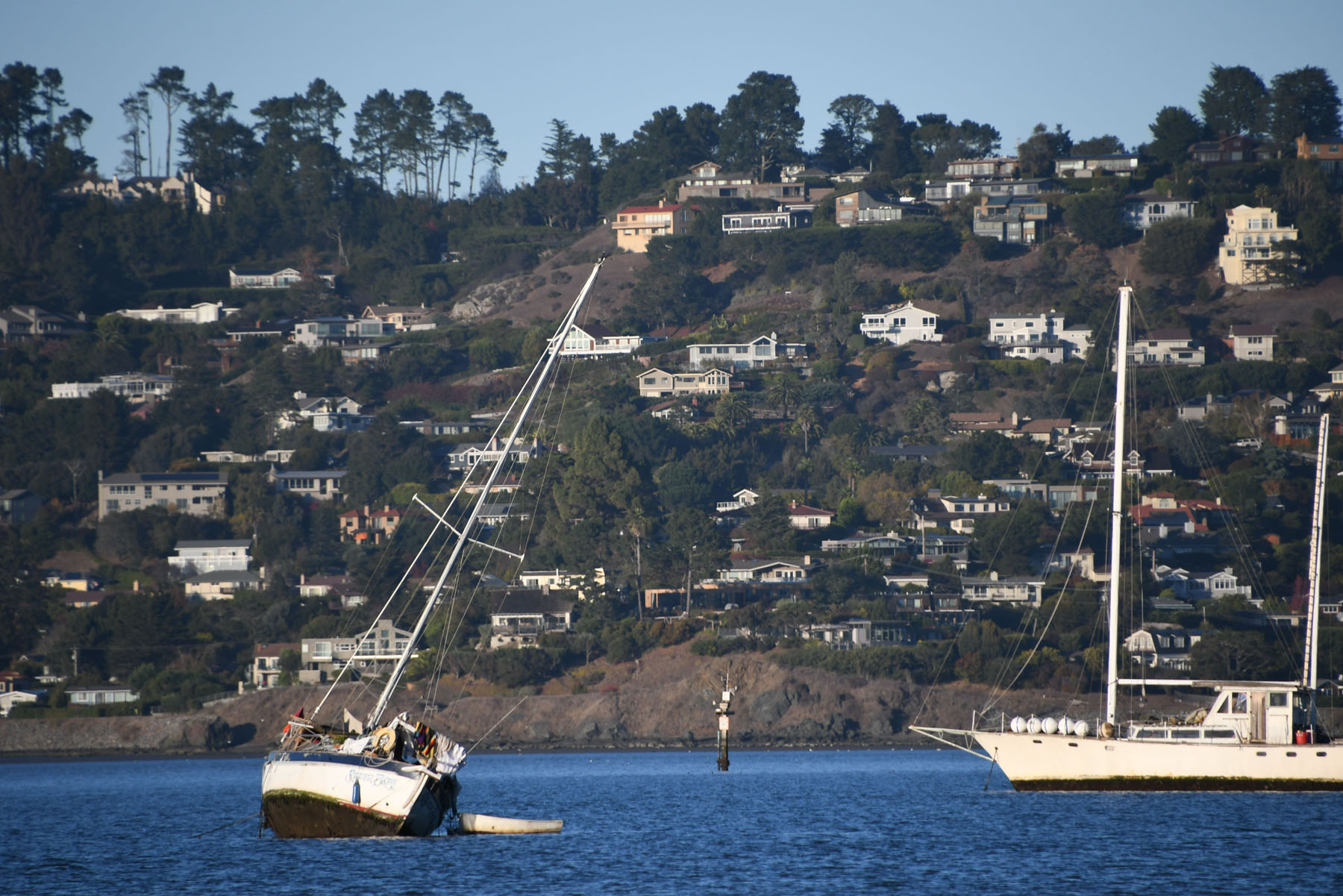
The 132-ft LOA Matthew Turner from Call of the Sea draws 10 feet and has been regularly sailing from her berth at the Army Corps docks, and Schoonmaker Point Marina regularly hosts some 100-plus-ft yachts on her side-tie berths, and so remains a great place to visit.
If you’re willing to ‘lean in’, an anchorage to the east and southeast can be a comfortable place to spend the night without needing a lot of scope. If you want to stay upright, stay to the south.
When Sailors Are Artists
You don’t have to own a boat to be a sailor, but you do have be a sailor to fully capture the essence of sailing in art. John David Taylor doesn’t own a boat but he is a sailor, and a “self-taught” maritime artist.
John sent us his rendition of the Jules Verne Trophy record holder, the French VPLP-designed Ultim trimaran IDEC SPORT, rounding Cape Horn on its pursuit of the record for the fastest circumnavigation.
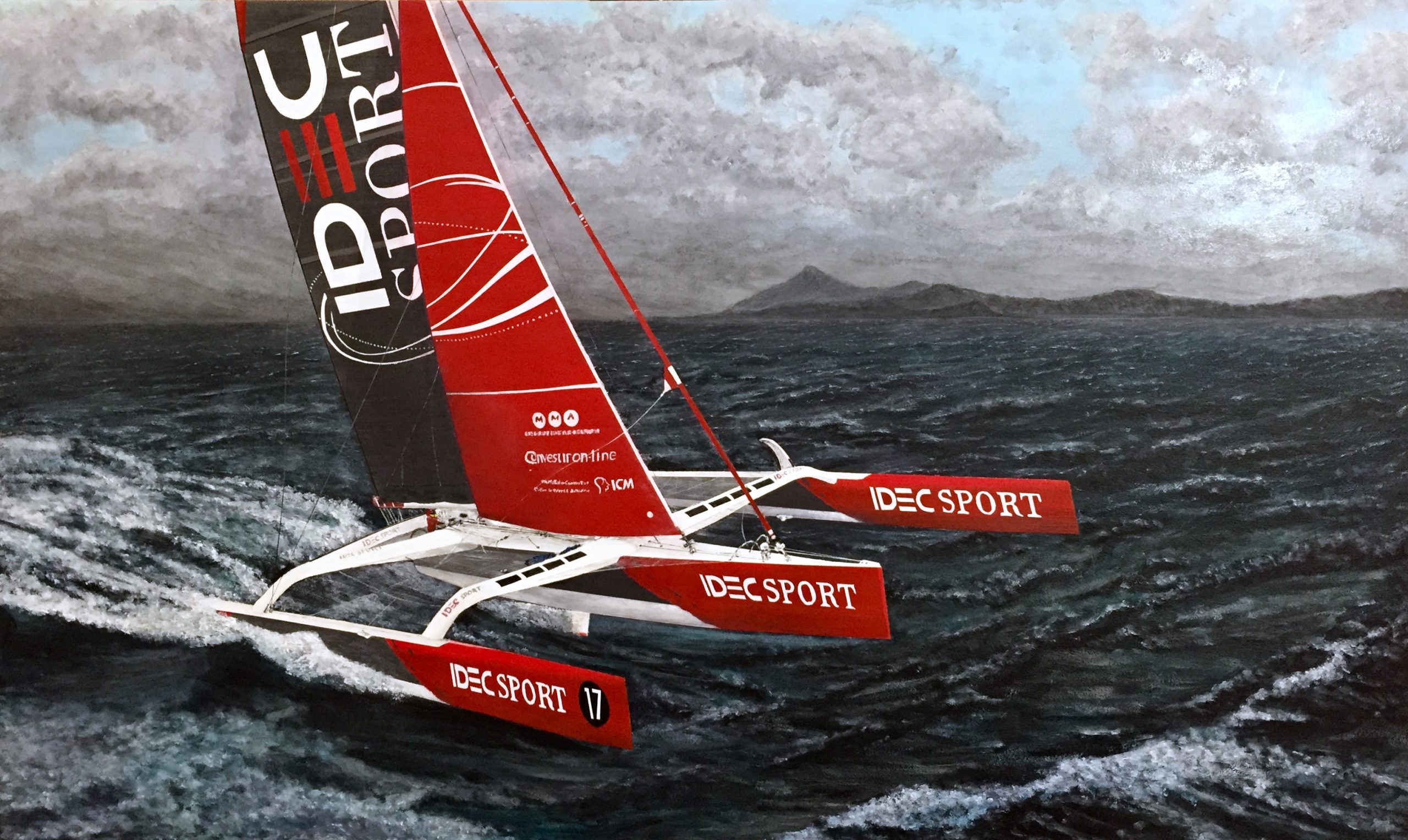
Although John doesn’t own a boat, he says he can build or fix almost anything related to the maritime world. “I know enough about boats not to be an owner … it’s best to know people who own boats!”
John’s lifelong connection with boats, sailing, and the ocean began with his first equator crossing at the age of 2, followed by his discovery of half-model fishing schooners in his grandfather’s basement in Nova Scotia.
He’s also a surfer and board builder, has worked as a sailing instructor and rigger, has participated in yacht races and deliveries, has worked as a welder in shipyards building aircraft carriers and destroyers, and has worked for naval architecture firms. Plus he’s a yacht and rig designer (member of a rig design team for 12-meters).
Did we mention John also spent 40 years working in rehabilitation medicine? (Where does he find the time to paint?)
Regardless of where he finds the time, John continues to paint and enjoy sailboats. Below is his first painting.
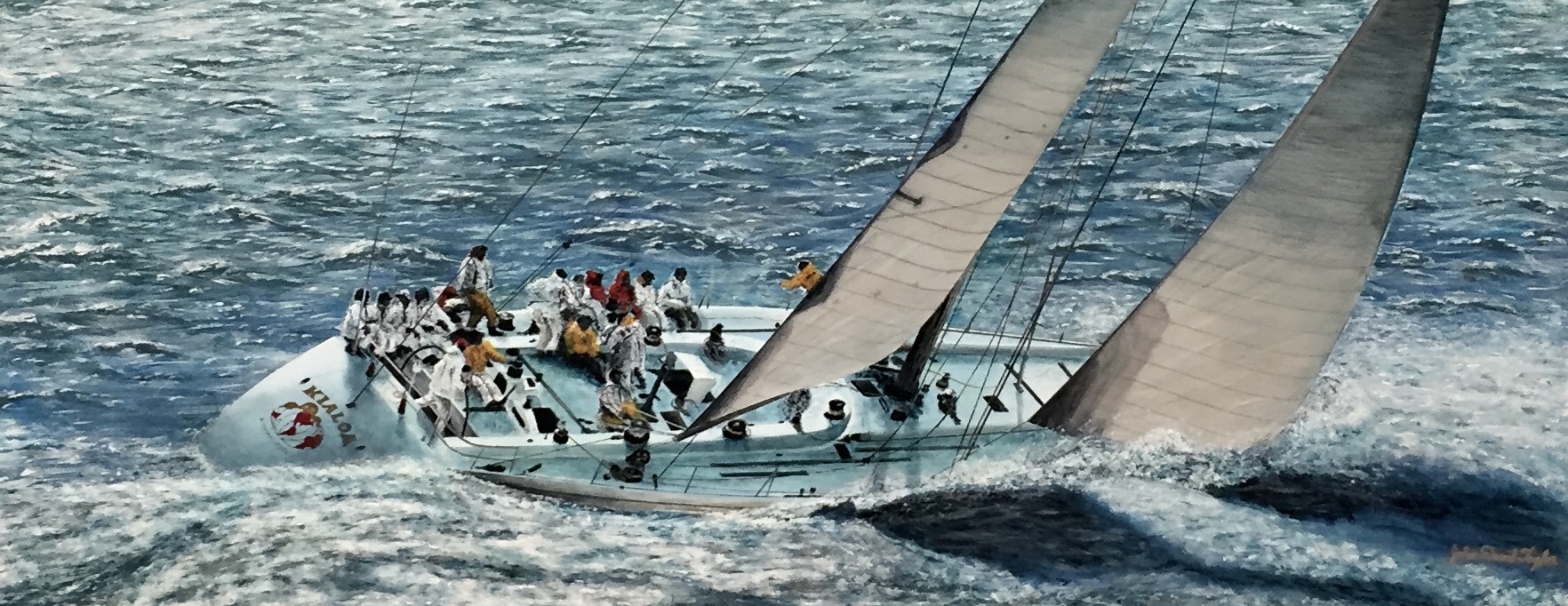
As of November 15, the French foiling Ultim Edmond de Rothschild and the Gitana Team were on standby to set sail within 72 hours on their attempt to break Francis Joyon’s 2017 record.
KKMI
The Perfect Cruising Ground — A Matter of Perspective
In this month’s edition of Latitude 38 we share Lin Pardey’s perspective about what may or may not be the perfect cruising ground …
A flight of pelicans skim the sun-sparkled water just a dozen feet from where we lie at anchor. A flock of black swans waddle across the exposed mud flats a hundred yards to leeward. No sight or sound of traffic or city life; no moorings, no other boats, nothing but us and the birds.
We’d sailed for hundreds of miles to get to know David’s first grandchild, whose family lives near Melbourne, Australia, and to partake in family holiday madness. Western Port Marina, just a dozen miles from his daughter’s home, proved to be the perfect location, one that let us invite family and a host of David’s cruising friends on board. Being secured alongside in the marina let us head off to lunches and evening entertainments without hesitation. But after three weeks of being tied cheek to jowl with 200 other boats and partaking of an overflowing social life, we’d needed a break and this felt like utter bliss.
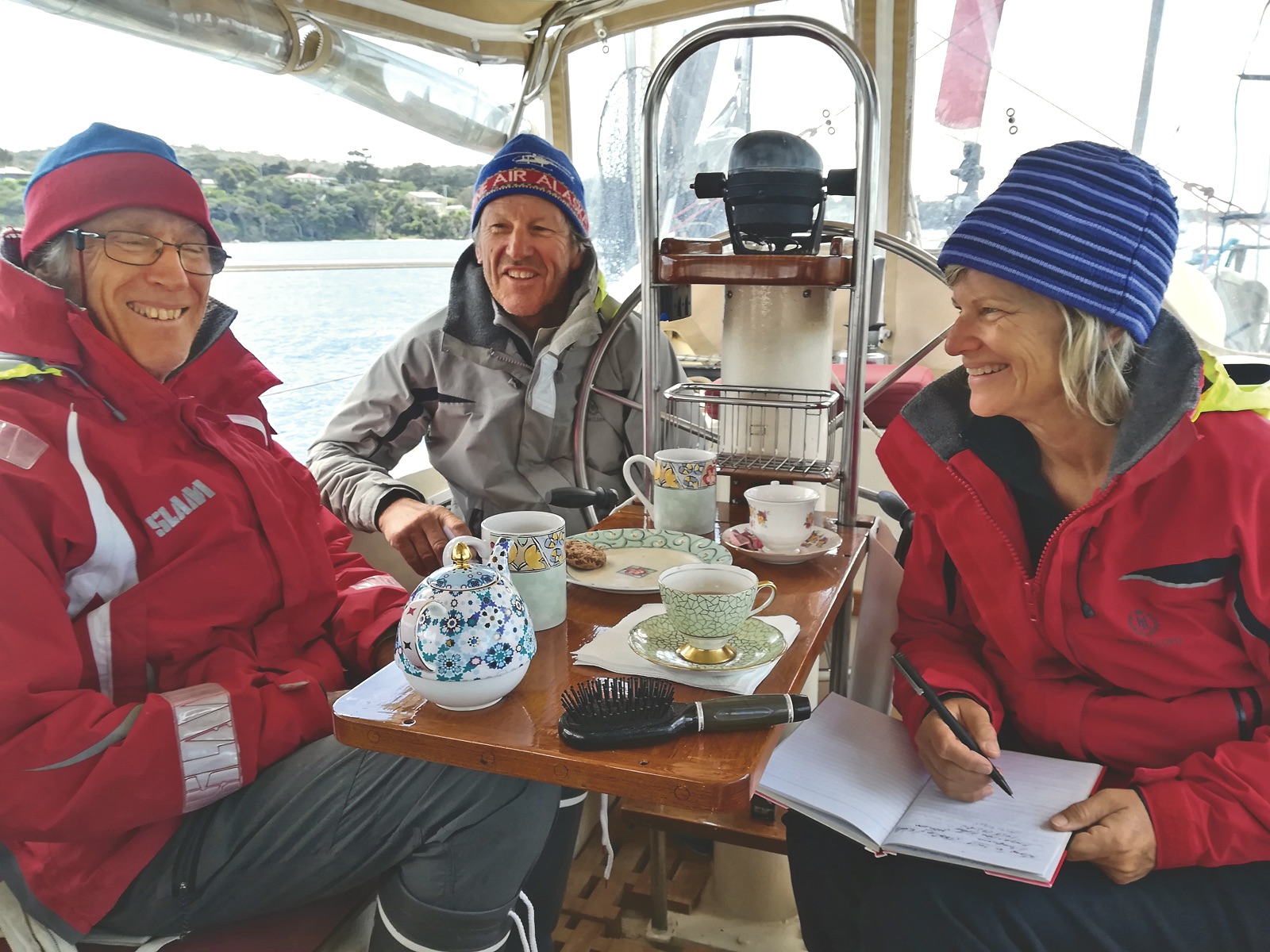
It would have been difficult finding this isolated anchorage without the aid of a chartplotter. Called Chicory Cut, it is just that; a deeper cut in a vast area of mud flats that now, at low tide, lay fully exposed — but at high tide would be hidden under 3 feet of water. The nearest visible land is almost a mile away and when David got on his paddleboard to go ashore for a walk soon after we anchored, he found solid ground unreachable unless he was willing to wade for half a mile through knee-deep, gooey-thick mud.
We’d chosen Chicory Cut as it is one of the few places in the huge expanse of Western Port Bay that offers protection from southwesterly winds and is, at the same time, away from swift currents and shipping channels. We knew we could only stay two days. After that we had to return to the marina or look for another cut on the northern side of the bay to have protection from the forecast northerly gales, which would make this anchorage untenable.
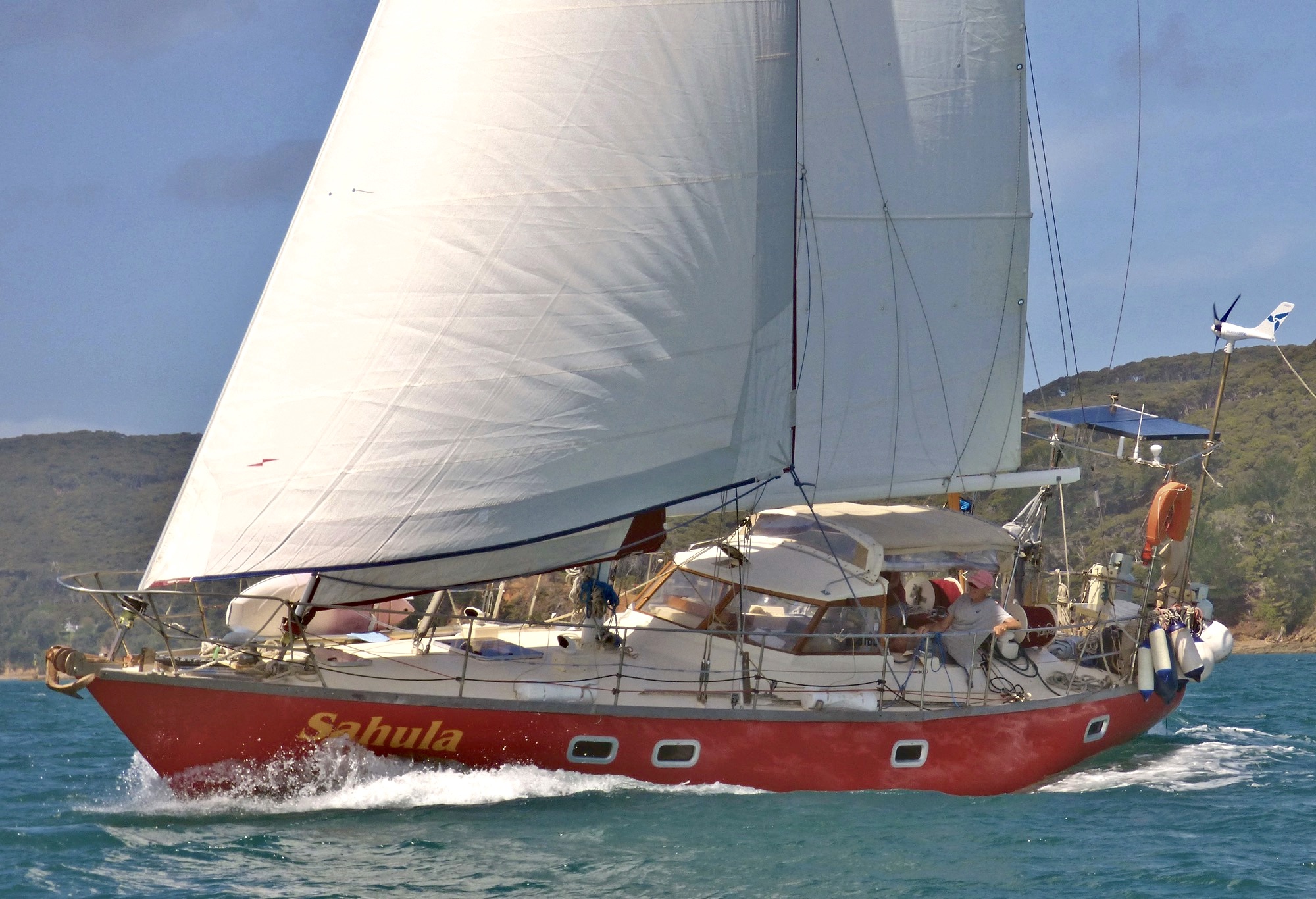
“Sure looking forward to getting up to the Barrier Reef in a few months,” I commented when David set out snacks for sundowners. He nodded in agreement, then added, “And after that, be good to get back to New Zealand to enjoy meandering around the Hauraki Gulf islands. Talk about two almost-perfect cruising grounds! Can’t see much to recommend this area.”
I had spent more than four decades exploring the world under sail before I met David Haigh. He had spent 11 years circumnavigating, and I remember how, on our first meeting, we’d begun the conversation by sharing our favorite cruising grounds. He had listed the islands of southern Turkey; I’d countered with Baja California and the river estuaries of western Ireland. Our highly different lists grew as the evening lengthened. That had been the beginning of a relationship that saw us set sail together from New Zealand 18 months ago.
Read more about Lin Pardey and David Haigh’s Down Under cruising adventures in November’s Latitude 38.
The Politics of War, America’s Cup Style
Just when you thought everyone involved with the America’s Cup in New Zealand was going to “give peace a chance,” it seems that it’s a battle on all fronts for Emirates Team New Zealand (ETNZ) and its CEO, Grant Dalton.
If they aren’t feuding with Challenger of Record (CoR) Luna Rossa over a key component of the foil cant system, or the Port of Auckland about opening up the cityfront racecourse areas, it’s about the government of New Zealand’s Ministry of Business, Innovation and Employment’s (MBIE) ongoing allegations of financial mismanagement by the team.
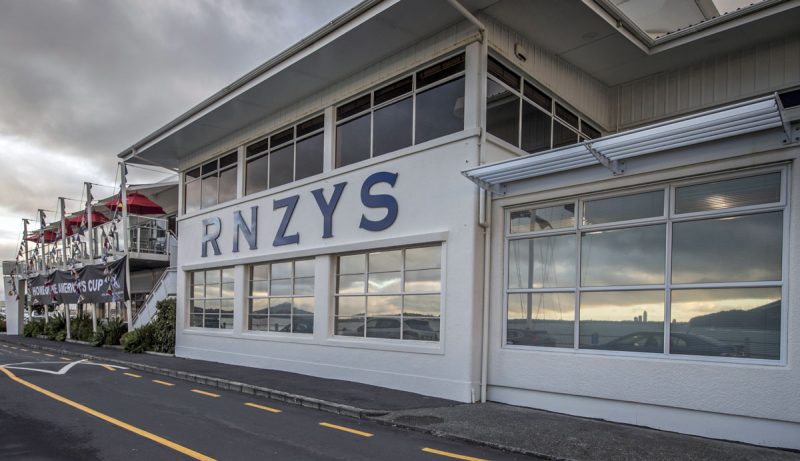
But at least the sailing operation seems to be out of the line of fire — and firing on all (hydraulic) cylinders — as ETNZ prepares to haul their new AC75 yacht out of the barn later this week.
Helmsman Peter Burling was unflappable in his leading role in Bermuda. Nothing this time around, with all the swirling inherent drama of late, will deter his determination to defend the America’s Cup for the Kiwi nation.
Foil Controversies
First things first though. Luna Rossa skipper Max Sirena is trashing the Kiwi-manufactured foil component, a critical part of the new AC Class boat that all the teams must use. This issue is separate from the recent allegation by a Brazilian yacht designer that the foiling-arm monohull concept was his.
“I can tell you the two components are not on the same level,” Sirena told the New Zealand Herald. “It’s like putting in a component coming up from a Formula One car together with one from a car you use every day, so it doesn’t really match. We are not happy, because it doesn’t work as we wish. It would be a shame if we’re going to lose a race because the system doesn’t work.”
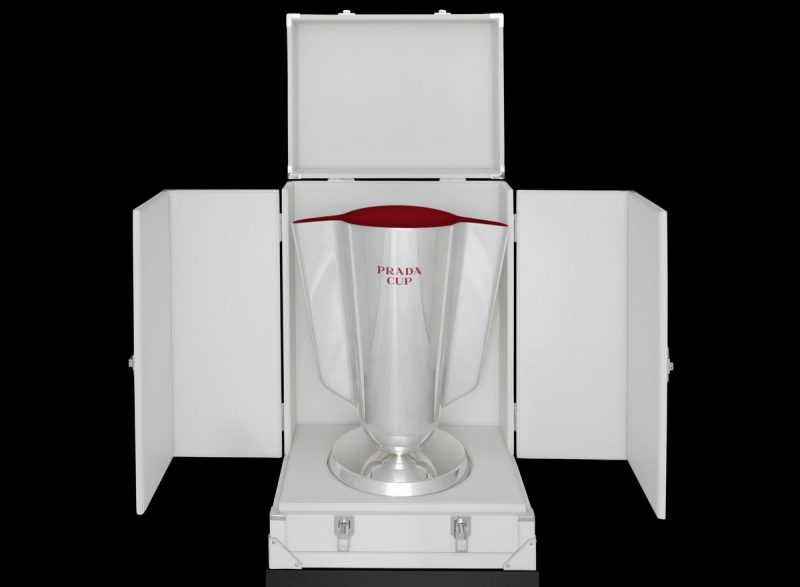
Stadium Racing Courses
On the positive news front, the Ports of Auckland announced that they will facilitate the use of the inner harbor racecourses for all racing, allowing for stadium viewing from shore.
“We wanted the public to enjoy the America’s Cup races as much as possible, so we looked again at the impact of racing on the port’s operations,” said Tony Gibson, CEO of the Port Authority. “The situation has changed considerably since January, because cruise ships are no longer able to visit Auckland. We will work with shipping lines to ensure there is minimal impact on their operations. We are very pleased to be able to support the event in this way.”
“Tony and his team have stepped up to help ETNZ and America’s Cup Event Ltd. (ACE) deliver on our promise we made years ago, to make this America’s Cup the most accessible and inclusive event ever,” said Dalton.
The AC Arbitration Panel had rejected mediation between all the parties involved because there was no mutual agreement on how to proceed.
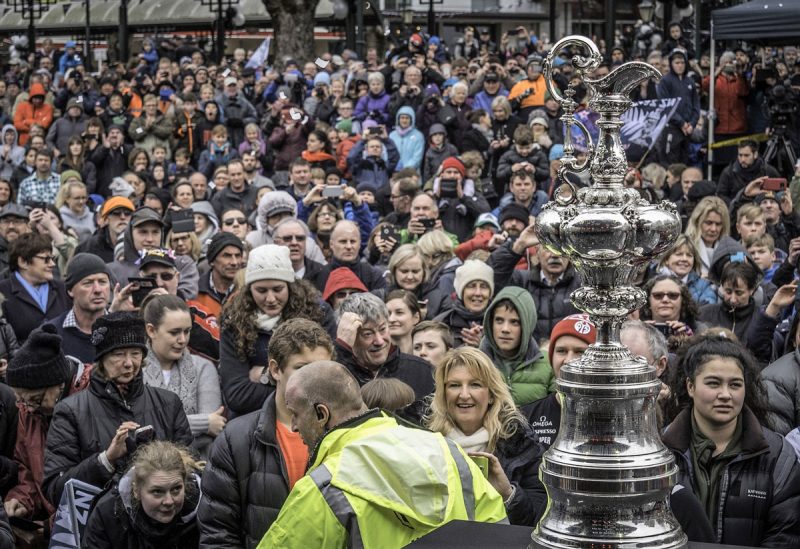
Funds Scandal
In the last, but not least, category is the fundraising scandal that continues to raise its ugly head. Both ETNZ and ACE have been caught in the crosshairs of multiple government oversight agencies by coming under the scrutiny of the Serious Fraud Office, which has been looking into the mismanagement of taxpayer funding of the America’s Cup.
The war began (it’s been ongoing for years) when the NZ Herald ran an investigatory feature story on a $3 million payment to a contractor for the design development of the AC75 class rule from ETNZ to the event budget of the ACE authority.
This is the same component that has come under scrutiny and criticism by Luna Rossa and the other competitors.
ACE was promised up to $40 million of taxpayer funds to help host the America’s Cup. MBIE alleges that the design fee was never contemplated in the Host Venue Agreement (HVA) under the terms to which the government had agreed.
Even though a recent audit conducted by MBIE and the accounting firm Beattie Varley found that there was “no financial impropriety of any nature,” the case is still heading to government-mediated arbitration next month.
All this led Dalton to issue a statement, along with several unreleased confidential letters, to bolster their defense in the court of public opinion.
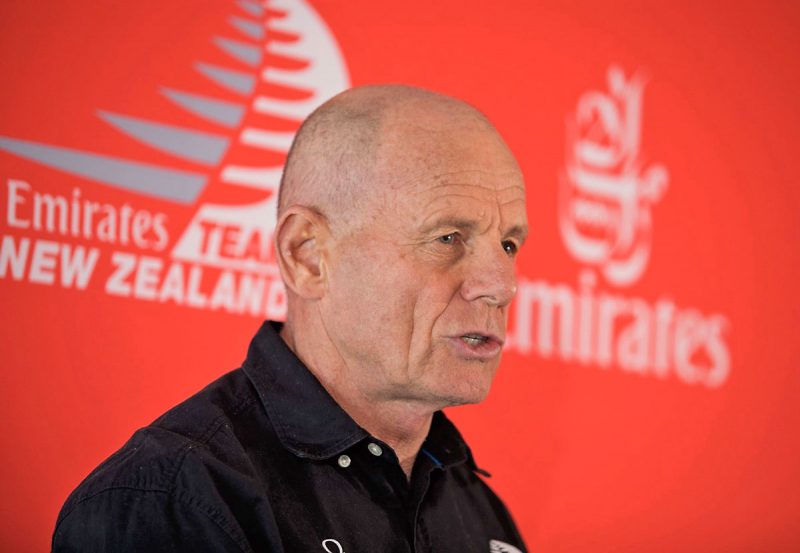
“In the face of further defamatory and baseless allegations again being leveled at ETNZ/ACE and its directors, we feel that we must now set the record straight, having tried to respect a due process in this saga all year. We have wanted to avoid such a public condemnation of MBIE.”
The underlying controversy is with the “boogying” (memo describing Dalton’s actions) or the moving of public dollars around, whether unseemly or not, from hosting the event to putting on the event.
As many of us here have learned, when it comes to government funding of such endeavors, especially for sports teams, their owners, and their extravagant stadiums, it is a very slippery slope indeed! Stay tuned.

